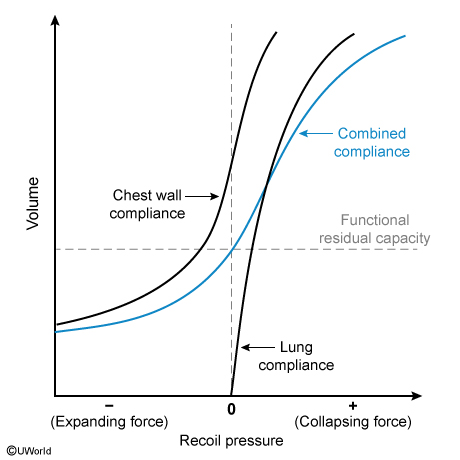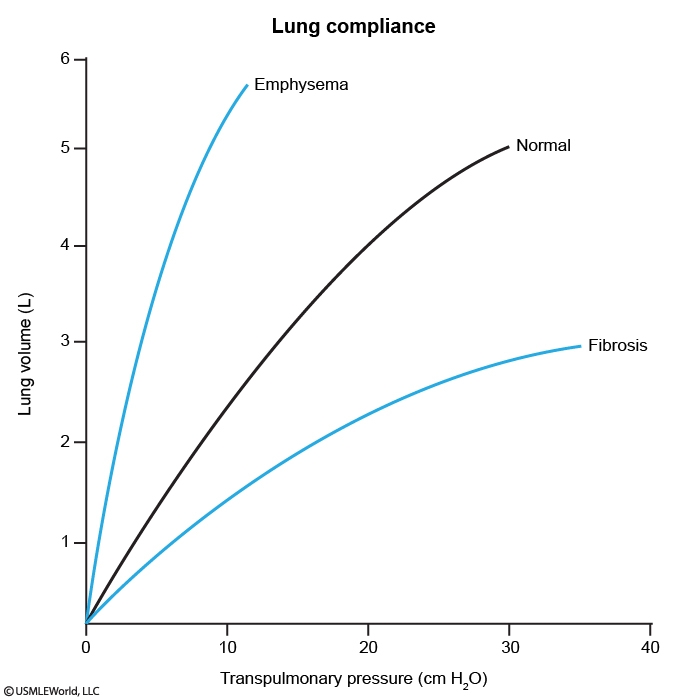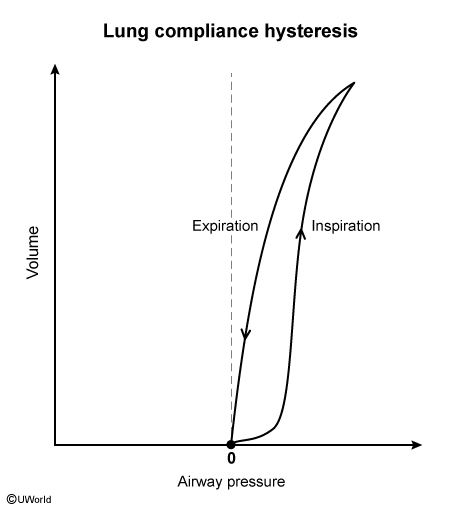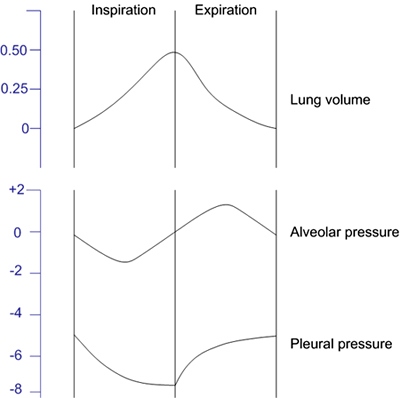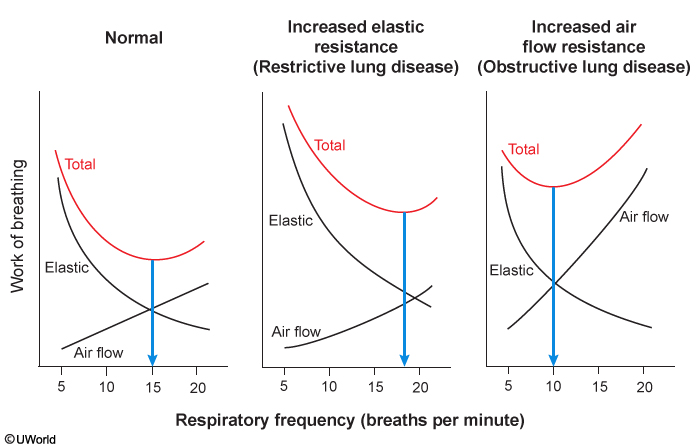Pulmonary Physiology: Respiratory Mechanics
Article Sections
Introduction
Respiratory mechanics describe how pressure, volume, and flow are related to each other in the respiratory system. This article integrates principles of physics and physiology to discuss the interaction between the lungs and chest wall, the process of normal tidal respiration, and the work of breathing.
Lungs and chest wall
The respiratory system consists of the lungs and chest wall, which are considered independent elements because they are anatomically separated. Changes in the lungs do not affect the intrinsic properties of the chest wall, and vice versa. However, changes in either affect the entire respiratory system in an additive manner.
Functional residual capacityThe lungs and chest wall have opposing natural tendencies:
- The lungs have a tendency to recoil inward (collapsing force) due to the elastin content of lung tissue.
Continue Learning with UWorld
Get the full Pulmonary Physiology: Respiratory Mechanics article plus rich visuals, real-world cases, and in-depth insights from medical experts, all available through the UWorld Medical Library.
Figures
